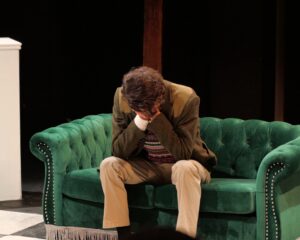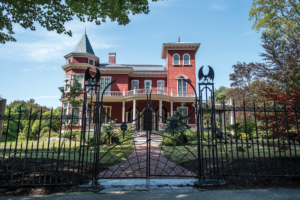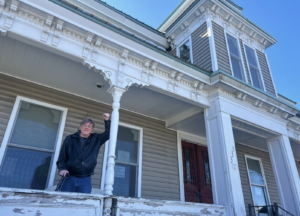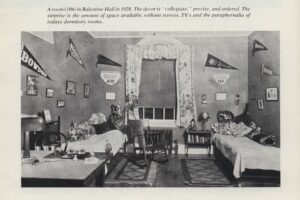Photos by Sze Wing Wong, Contributor

This past Saturday, University of Maine students and the local community got a glimpse of worldly cultures at the 12th annual International Dance Festival (IDF).
The festival, which was held in the Collins Center for the Arts (CCA), was described in the program as, “an evening of dance from around the world.” IDF attracted students, families, faculty and friends of all ages.
IDF was hosted by UMaine’s Office of International Programs, and boasted about 100 dancers from different countries all around the world. There were two performances: a matinee and an evening show.
IDF is a dance showcase celebration in which students perform traditional and non-traditional dances from their own country or culture. Dancers wear traditional clothing and costumes, sometimes with authentic fabric from the country they are representing.

According to Diana Abraham, a fourth-year student and a veteran dancer, IDF serves as a learning experience to those who participate.
“They [the dancers] learn about their country’s culture, and their style of dance, or their country’s culture style of dance,” Abraham said. “We’re not all from the same country … so we bring, kind of our own style and our cultures from our different countries and we mesh them together… we choreograph those dances, we teach each other, we learn about each other’s cultures and we perform.”
In previous years, Abraham participated in a group called “Fusion,” an all-female group which integrated different cultures to create a “fusion” of girl-power.
Abraham, who is Nigerian, represented Africa on Saturday with seven other dancers from the African Student Association in a piece entitled “Africa’s Heartbeat.” Five different African countries were represented on stage, three of which were showcased in the dance number itself. The fabric used for the costumes in “Africa’s Heartbeat” came from Nigeria.
“We show the University of Maine what Africa has to offer,” Abraham said.

Although there were 14 different dances representing specific cultures, there were many other countries represented in the IDF backstage, including Seyyed Mohammad Hashemi’s country. Hashemi is an international student from the Middle East, specifically northern Iran. He served as a backstage support volunteer during the IDF.
In Hashemi’s home country, rice is a major crop, and most of it is grown and harvested in the north closer to his home. There is a traditional dance that shows the growing and harvesting of rice in Iran, typically performed in traditional clothing. Western Iran also has a dance, which is more Turkish, according to Hashemi, in which the dancer only uses his or her legs.
These dances, though not performed in Saturday’s shows, serve as an example of how ingrained dancing is in other countries, but also how the IDF is a drop of water in a sea of cultures and traditions represented at UMaine.
Because he is connected to these dances from his home country, Hashemi experiences other countries’ traditional dances with an analytical eye.
“If you can understand more of the background, what those colours mean … the type of the clothes they put on … the moves or the acts in the dancing … that comes to my mind when I see [the dances],” Hashemi said.
Hashemi is one of seven backstage hands whose duties were to assist in quick changes, keep other dancers silent backstage and to help the IDF run smoothly. This was his second year volunteering for the IDF.
“It’s a fun event, especially backstage … what specific groups are doing … is like their traditional dancing, which is not very practical when you go to a bar,” Hashemi joked. “But what you see backstage is [sic] you see all those groups with their traditional clothes … it’s fun.”
Similar to Abraham’s sentiment, Hashemi feels the IDF was an important experience for the audience members, cast and crew alike.
“I’m an international student myself … so although my country’s not [represented], it’s something like being a member of a family, and trying to help them,” Hashemi added. “It’s something interesting when you see the feedback of the people … who came for the show, it’s very exciting. when they come out of the show, you see they are smiling and they are happy, and you see that they had fun and they enjoyed their time.”

According to Performance Coordinator Jessica Bishop, the IDF has significantly grown over the years. Originally, the IDF was performed in Minsky Recital Hall, a much smaller venue, and included only one performance.
“It was so well-respected and attended that the next year I was actually hired as an intern and the primary job [description] was to ‘kick it up a notch,’” Bishop said. “We filled the auditorium that second year, and we’ve been doing it every year since … we’ve started small, and it’s gotten bigger and bigger.”
It wasn’t until its second year that the IDF moved to the CCA, and it wasn’t until 2008 that it expanded to offer a second performance.
“Over the 12 years, we’ve seen dances from dozens of countries, we’ve seen soloists, we‘ve seen groups. Nobody, well hardly any, are [sic] professionals. It’s something that’s very different from dance here in the United States. Dance [in other countries] is very much a part of the culture and the tradition, with the richness of the music and the costumes … [here] we don’t go to weddings and have a traditional dance, we don’t have that gathering of relatives and have something traditional when we celebrate, so it’s definitely different … it gives opportunity to see that diversity piece,” Bishop said.
Similarly, Abraham enjoyed the aspect of sharing her culture with those who would not otherwise be able to experience it.
“It’s no surprise to everyone here, Maine doesn’t really have a wide racial demographic, so it’s great to see the people that you don’t normally see every day, it’s great to see what their culture is … let’s say you’re in class with someone that’s from Cameroon or from Ghana … there’s not much that you can get to know about their culture sitting in like, a bio-chemistry class,” Abraham said. “It’s just a great way for me to connect with faculty, staff, professors and my friends onstage. It’s a great way for them to connect with me and see my culture without me having to talk about it. I’m really not a talker. I’d rather show people … what Africa is really all about.”

Sayoko Mori, coordinator of international programming and outreach, agrees.
“Through dances … you see the culture behind it. That is the beauty,” Mori said.
The dancers themselves began rehearsing and preparing for IDF at the beginning of this semester, but the creative process began in August of last year. Students began getting involved in early December.
“They are definitely some of the hardest workers I have ever seen,” Bishop said.
Countries represented in the IDF included Bangladesh, China, Brazil, Vietnam, Turkey, Japan, Afghanistan, India, the Caribbean and countries from Africa. Celtic cultures were represented in the dances, as well as the UMaine Tango Club and the Hip-Hop Club.
“It’s a way for them to show part of their home, part of their heart,” Bishop said.
Abraham credits everyone else.
“I want to thank all of my group members for their hard work this semester,” Abraham said. “We have come together … I also want to thank the African Student Association for their strong support … as well as the organizers for the International Dance Festival.”
If you would like to donate to the International Programming Fund to help sponsor next year’s International Dance Festival, please visit the UMaine Foundation website at http://www.umainefoundation.org.











